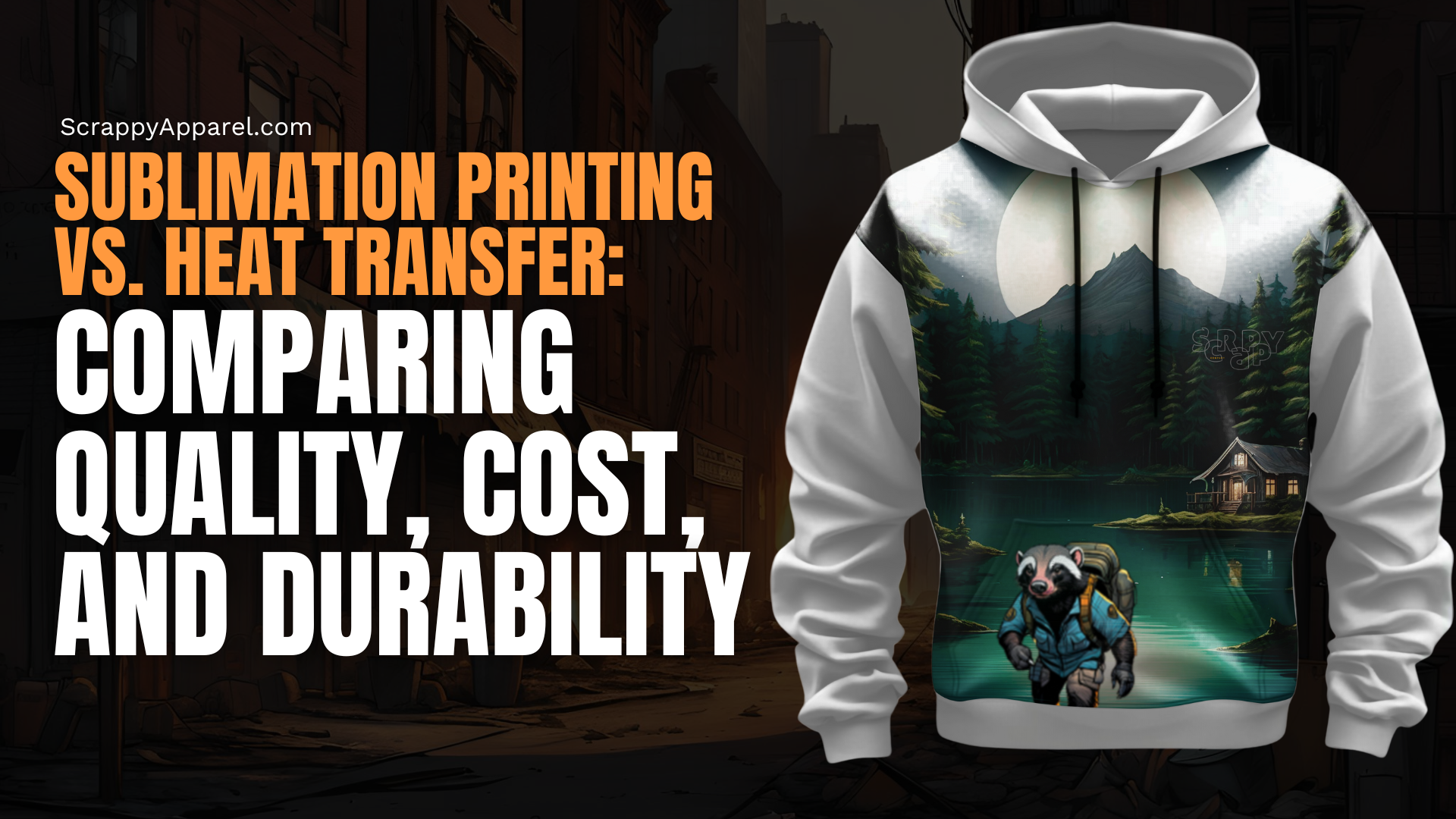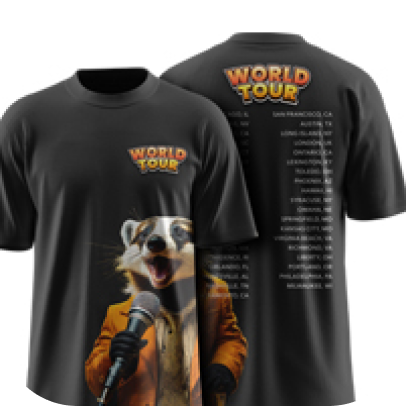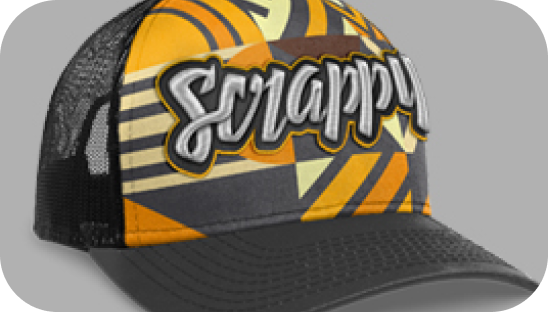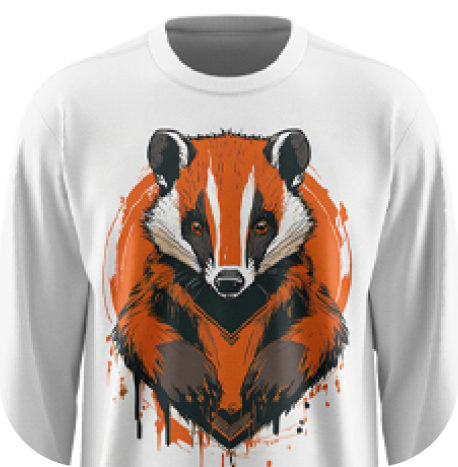Sublimation Printing vs. Heat Transfer: Comparing Quality, Cost, and Durability
These days, the custom apparel world moves at viral video speed. Customers crave durable fabrics, vibrant graphics, and quick deliveries from the brands they love.
Here are two of the printing processes that are dominating the printing world today:
- Dye-sublimation: heat turns dye into gas, bonding color inside polyester fibers.
- Heat transfers: It’s an umbrella term that covers different methods, with Direct to Film (DTF) being the most popular. With heat transfer, inks are printed onto a film, coated with adhesive, then pressed on top of the fabric.
Below, we pit the two against each other on quality, durability, cost, and versatility, then wrap up with best practice tips straight from Scrappy Apparel’s experts.
Get Luxury-Level Apparel Manufactured by Scrappy

How These Technologies Actually Work
Here is a quick overview of what’s happening so you can spot where costs, limits, and advantages begin.
Sublimation: Quick Overview
- Imagine printing your artwork in reverse on special transfer paper, then sandwiching that paper against a polyester tee and giving it a blast of roughly 400 °F heat.
- In those few seconds, the solid dye turns to gas, slips deep into the fabric’s fibers, and cools back into a solid.
- Because the color is now inside the yarn, you feel nothing on the surface, you can wrap designs from seam to seam, and the print will resist any sweaty workouts, chlorine, and beach.
What to expect: Zero hand-feel, photographic color, wash-proof for life.
Heat Transfers: Quick Overview
- The design jets onto a clear PET film in full CMYK color palette plus white. While the ink is still tacky, it picks up a fine adhesive powder (some modern systems bake the glue right in).
- After a quick cure, that film meets the garment under a press. Peel the carrier away and you’re left with a thin, stretchy graphic that sits on top of the fabric.
- The payoff is crisp detail on practically any fiber (cotton hoodies, fleece joggers, nylon windbreakers) because the adhesive does the heavy lifting.
What to expect: High-quality detail, strong stretch, and compatibility with cotton, blends, and nylon (nearly anything you can sew).
Quality & Color Brilliance
When your apparel is under bright store lights, magnified in 4K product photos, or worn courtside under the sun, print quality has to impress from every angle.
Here’s how each technology delivers (or doesn’t) on that promise of vivid, memorable graphics:
- Why sublimation still steals the show: Because the dye migrates into the polyester yarn, you get true fiber-deep saturation. Think billboard-bright reds, photorealistic gradients, and razor-sharp micro-text that wrap from seam to seam without a single registration break.
There’s zero extra weight on the fabric, so color stays vivid even on lightweight recycled-poly or “cotton-touch” performance blends that feel soft but behave like true poly under the press. - How heat transfers have narrowed the gap: Modern DTF starts with a white underbase, so neons and pastels explode off dark cotton or fleece, something sublimation can’t touch.
New powder-free adhesive films shave down that old “sticker” feel, and hybrid methods let decorators drop spot-on Pantone inks or metallic pops right beside digital photo gradients. Fine-line detail is excellent, too; small text and intricate logos reproduce cleanly because the film carries the ink without bleeding into the fabric weave.
The bottom line: For full-bleed, feather-light prints on poly garments, sublimation remains the king of color brilliance.
When you need one design to look identical on a cotton hoodie and a nylon windbreaker, today’s heat-transfer systems give you punchy, reliable results—just remember they sit on the surface rather than bonding inside the fiber.
Durability & Wash Resistance
No brand wants its logo flaking off after laundry day. Because sublimation dye bonds inside the polyester yarn, the print essentially becomes part of the fabric.
That fiber-deep chemistry means no cracking, peeling, or fading. Even after industrial laundering, salty surf sessions, or endless treadmill miles.
Scrappy backs that promise with in-house quality-assurance checks that flag color drift or surface wear long before a shipment leaves the floor.
Heat-transfer graphics have come a long way, but they’re still a surface treatment. When they’re printed, powdered, and cured correctly, most DTF prints now hold up for roughly 60-100 hot-water washes before you see the first micro-cracks.
Metallic, glitter, or textured foils can dull sooner under heavy abrasion, and high-heat dryers will speed that aging curve.
In other words, they’re durable enough for casual streetwear but still a tier below sublimation if your garments face daily grind or commercial wash cycles.
Cost & Production Efficiency
Getting started with sublimation can feel inexpensive, desktop printer bundles run under a thousand dollars, but real production scale is a different story.
Wide-format printers, industrial heat presses, and the extra floor space to house them can push your investment well into five figures before you print a single jersey.
With heat-transfer printing you have two choices. You can outsource ready-to-press “gang sheets” for just a few cents per square inch, paying only for what you need.
Or you can bring the process in-house with a dedicated DTF setup, which due to the steady stream of ink, adhesive powder, and maintenance time costs can quickly add up.
That’s why sublimation is often the better choice for brands that want to scale up without hassle or additional costs.
Why Partnering with Scrappy Saves Money and Fuels Scale
Choosing Scrappy means handing the entire production puzzle to a team that’s already solved it. We keep the process seamless, from sourcing the right fabric to boxing the final run so you can spend your time perfecting designs and growing sales instead of chasing vendors and troubleshooting equipment.
Here’s the Scrappy Apparel advantage:
- One point of contact. We handle everything from artwork setup to final inspection and shipping—so you’re never left guessing who’s in charge.
- Built-in quality checks. We inspect color and print accuracy at several stages, catching issues before they ever reach a box.
- Room to grow. Need a few hundred pieces or tens of thousands? Our production lines scale up without missing deadlines.
- On time, every time. We deliver when we promise, even in the busiest season.
- Fabric options that fit your brand. Whether you want budget-friendly poly or premium blends, we source materials that match your performance needs and price point.
Ready to Benefit from Pro-Level Sublimation (and Let Us Tame the Rest of Your Supply Chain?)










